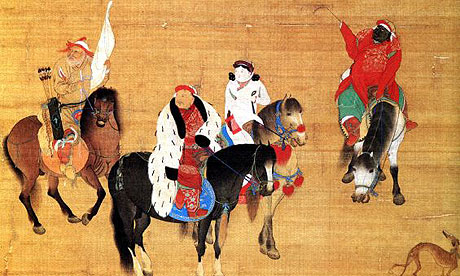Atlantis solved everything. With its vast bulk filling in most of the ocean, ancient voyagers no longer had to traverse thousands of miles of open water to go from the Old World to the New; all they had to do was get over a negligible stretch on either side, and thereafter did most of their traveling on foot. Atlantis proved so convenient that it opened up other heady possibilities besides an Egyptian migration to America. One school of thought reversed the traffic and sent Mayas scuttling eastward across this paradise to bring pyramids to the valley of the Nile.
The most dazzling idea, and the one that probably came to command the greatest number of adherents, was that Atlantis itself deserved the credit for being the fountainhead of civilization. The lost continent, it was asserted, had supported a superlatively gifted people who, long before the disastrous total drowning, thought up things like pyramids and hieroglyphics and, migrating eastward and westward, were the common source for both Egyptian and Mayan civilization.
But so much for the Atlantic. As far back as the sixteenth century, there were those who argued that pre-Columbian voyagers had come to the New World via the Pacific. They and their successors suggested the Chinese or Indians, or Malaysians or Polynesians, and some even sent the Lost tribes to America by way of the Far East. Others, eying a vast stretch of the Pacific, took a leaf from the book of Atlantis and conjured up a lost continent in the Pacific-Lemuria, or Mu. It once stretched, we are told, from Easter Island to the Landrones, and its inhabitants, whose record for creativity was right up to the mark set by the Atlanteans, triumphantly carried Mu’s gifts to civilization westward to India and Eastward to America.

Grant Wood. Appraisal. 1931. Read More:http://mgpandersen.com/art-101/section-3-modern-art/american-realism/
Still others offered candidates only a shade less fanciful than the inhabitants of a lost continent: Buddhist monks who had sailed off towards the East in the fifth century A.D. ; Koreans escaping from Chinese tyranny; survivors of a fleet that Kublai Khan had sent out against Japan and that was almost totally destroyed in a storm; and survivors of an expedition dispatched to the Persian Gulf by Alexander the Great.

—Where next? Kubla Khan hunting. Picture: Taipei National Museum—Read More:http://www.guardian.co.uk/books/2008/sep/15/fred.daguiar.poetry.workshop.kubla.khan
Fortunately, alongside the amateur theorizers, sober professionals- anthropologists and archaeologists- were pondering the problem of New Worls origins. Today, well more than a century of patient digging, collecting, and observing and study, they have been able to formulate some more or less convincing conclusions. First, the American Indians arrived in a series of waves, almost certainly by way of Alaska; the migrations took place when there was a bridge of land between Asia and America at what is now the Bering Straight. Over the centuries they filtered south, gradually climbing the standard rungs in the ladder of civilization: they learned pottery making, farming, metallurgy, building on a large scale, writing. ( to be continued)…







 COMMENTS
COMMENTS